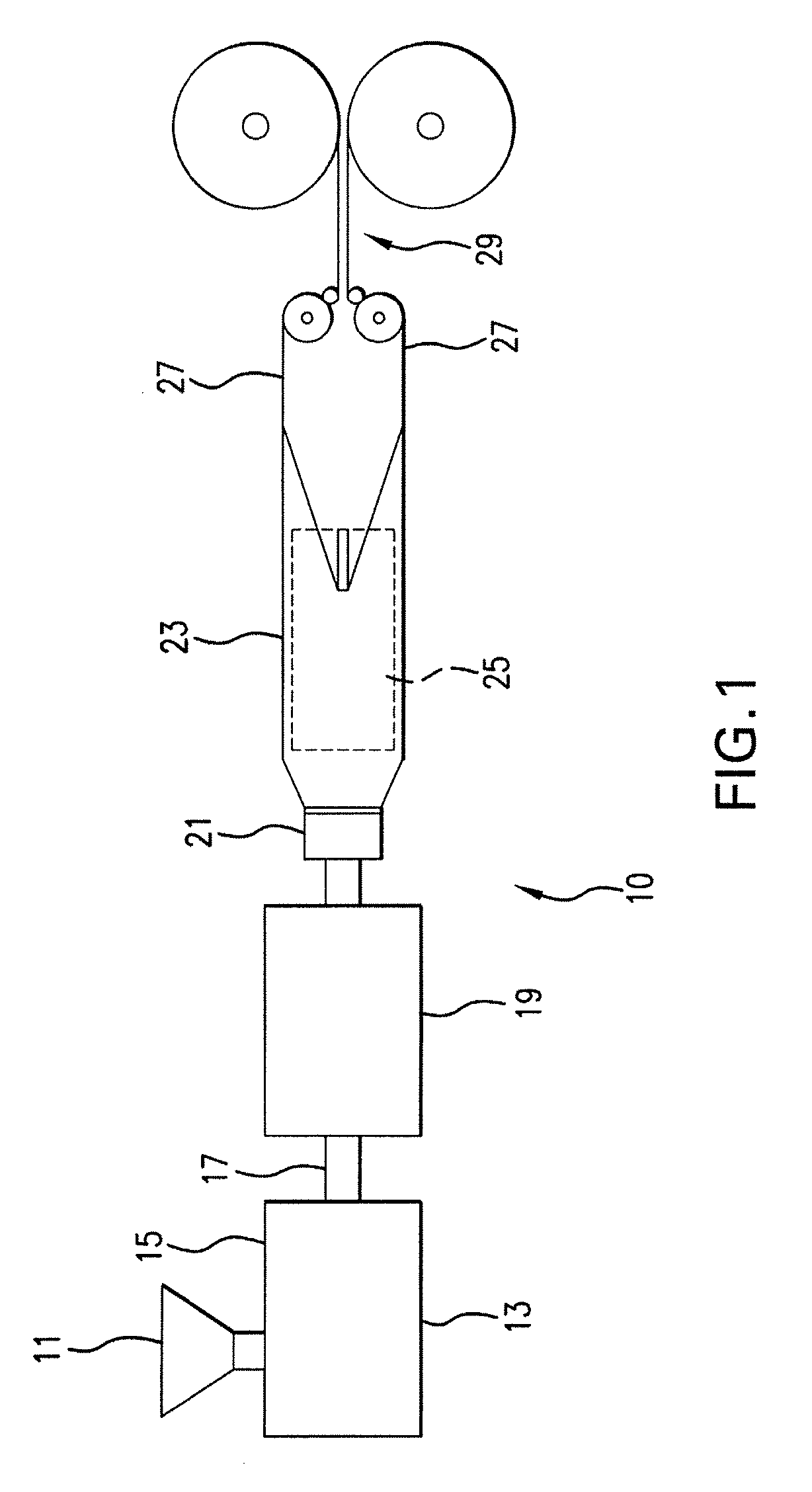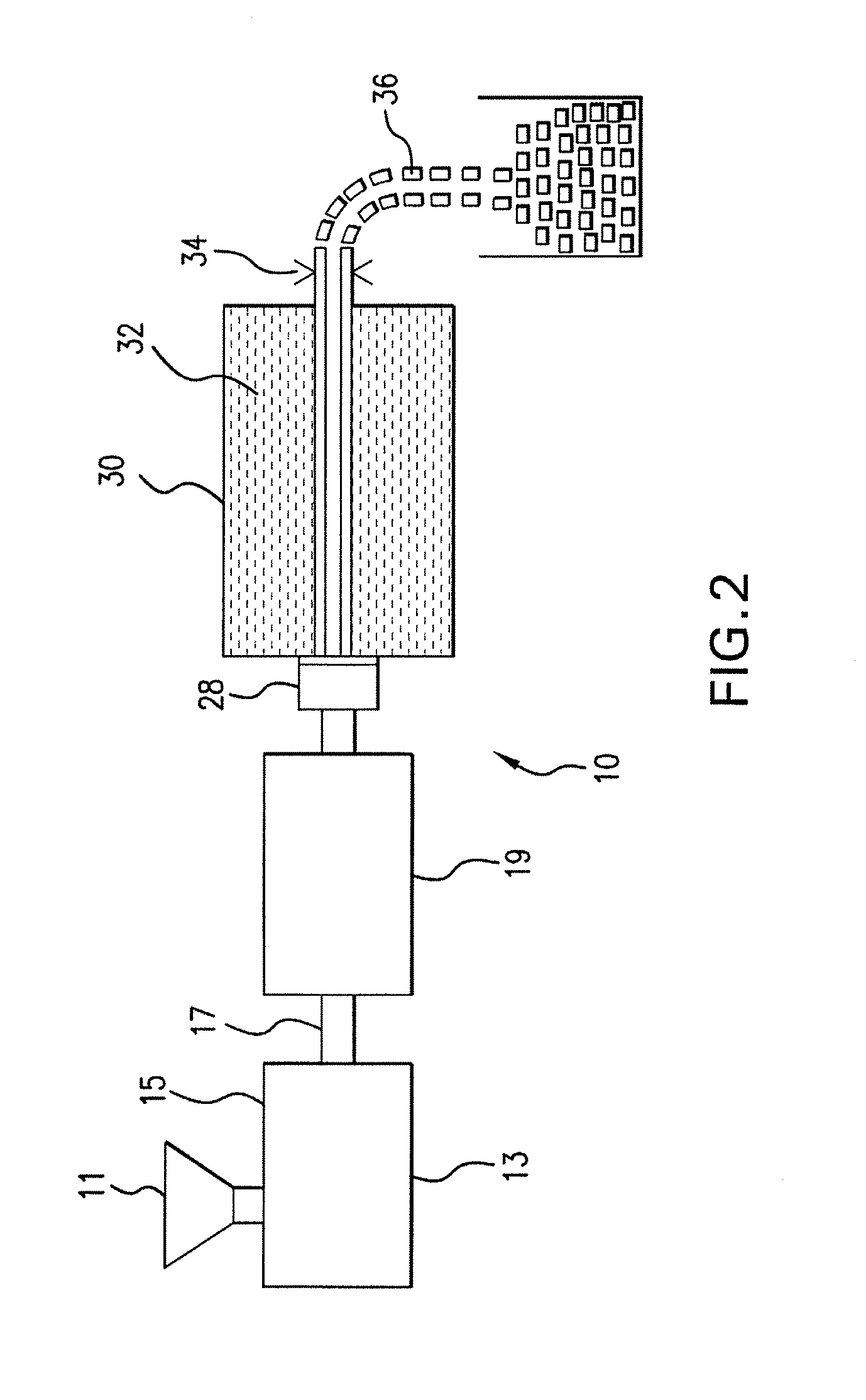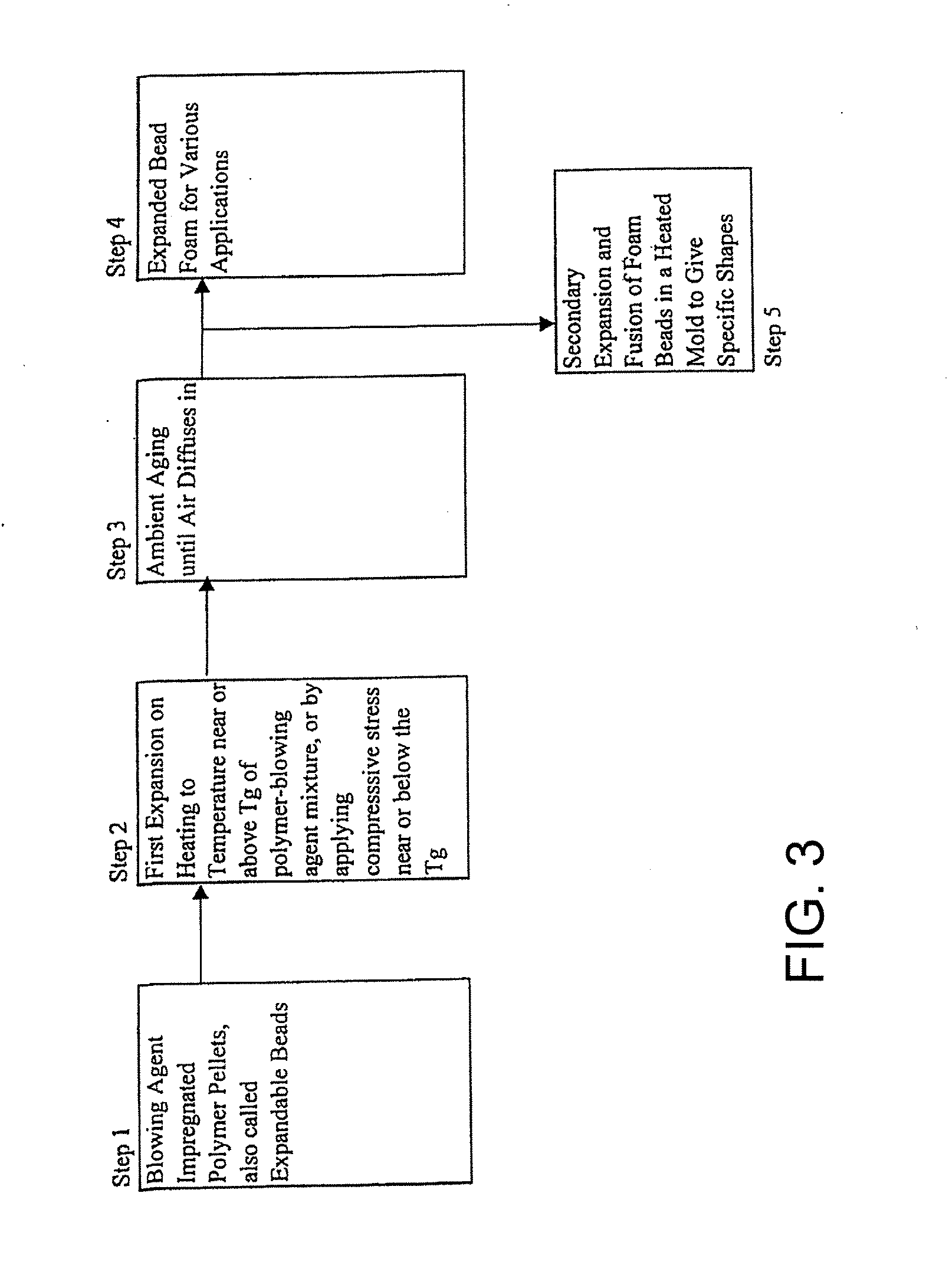Reduced-voc and non-voc blowing agents for making expanded and extruded thermoplastic foams
a thermoplastic foam and extruder technology, applied in the field of foams, can solve the problems of significant increase in manufacturing cost and lack of composition teaching, and achieve the effect of improving the resistance to flame spread
- Summary
- Abstract
- Description
- Claims
- Application Information
AI Technical Summary
Benefits of technology
Problems solved by technology
Method used
Image
Examples
example a
[0086] Various blowing agents were tested with the results for the extruded foam sheets shown in FIG. 5. Specifically, various alkenyl aromatic polymer foam sheets useful for thermoforming applications were made from comparative blowing agents and inventive blowing agents in accordance with the extrusion process generally described herein. It should be noted that for the various examples reported in FIG. 5, each exemplary foam was made with the same polymer and the same hardware operated in exactly the same way; the only variable being the blowing agent. All of the inventive blowing agents included methyl formate; the comparative blowing agent(s) did not include methyl formate.
[0087] Each of the alkenyl aromatic polymer foams was made on a tandem extrusion line employing 2.5 inch and 3.5 inch single screw extruders and blowing agent was injected through a single port in the primary extruder. The output rate was about 150 lb / hr. The polymer resin used was high heat general purpose p...
example b
[0090] Various blowing agents for use in making thermoformable polystyrene foam sheets were tested with the results for the extruded foam sheets and the thermoformed parts shown in FIG. 6. Specifically, various alkenyl aromatic polymer foam sheets useful for thermoforming applications were made from comparative blowing agent and inventive blowing agent blends, in accordance with the extrusion process generally described herein. The comparative blowing agent blend includes isopentane, a VOC blowing agent, in combination with the non-VOC co-blowing agent carbon dioxide; and the inventive blowing agent blends substitute methyl formate, a non-VOC and non-HAP blowing agent, for isopentane and, therefore, include isopentane, carbon dioxide and methyl formate. The polystyrene resin and the hardware used, and the output rates were the same as in Example A.
[0091] All of the foams of FIG. 6 were dimensionally stable. The total number of moles of the blowing agent in all the formulations in F...
example c
[0095] Various blowing agents for use in making thermoformable polystyrene foam sheets were tested with the results for the extruded foam sheets and thermoformed parts shown in FIG. 7. Specifically, various alkenyl aromatic polymer foam sheets useful for thermoforming applications were made from comparative blowing agent and inventive blowing agent blends, in accordance with the extrusion process generally described herein. The comparative blowing agent blend includes isobutane, a VOC blowing agent, in combination with the non-VOC co-blowing agent carbon dioxide; and the inventive blowing agent blends substitute methyl formate, a non-VOC and non-HAP blowing agent, for isobutane and, therefore, include isobutane, carbon dioxide and methyl formate. The polystyrene resin and the hardware used, and the output rates were the same as in Example A
[0096] All of the foams of FIG. 7 were dimensionally stable. The total number of moles of the blowing agent in all the formulations in FIG. 7 is...
PUM
| Property | Measurement | Unit |
|---|---|---|
| Time | aaaaa | aaaaa |
| Thickness | aaaaa | aaaaa |
| Fraction | aaaaa | aaaaa |
Abstract
Description
Claims
Application Information
 Login to View More
Login to View More - R&D
- Intellectual Property
- Life Sciences
- Materials
- Tech Scout
- Unparalleled Data Quality
- Higher Quality Content
- 60% Fewer Hallucinations
Browse by: Latest US Patents, China's latest patents, Technical Efficacy Thesaurus, Application Domain, Technology Topic, Popular Technical Reports.
© 2025 PatSnap. All rights reserved.Legal|Privacy policy|Modern Slavery Act Transparency Statement|Sitemap|About US| Contact US: help@patsnap.com



